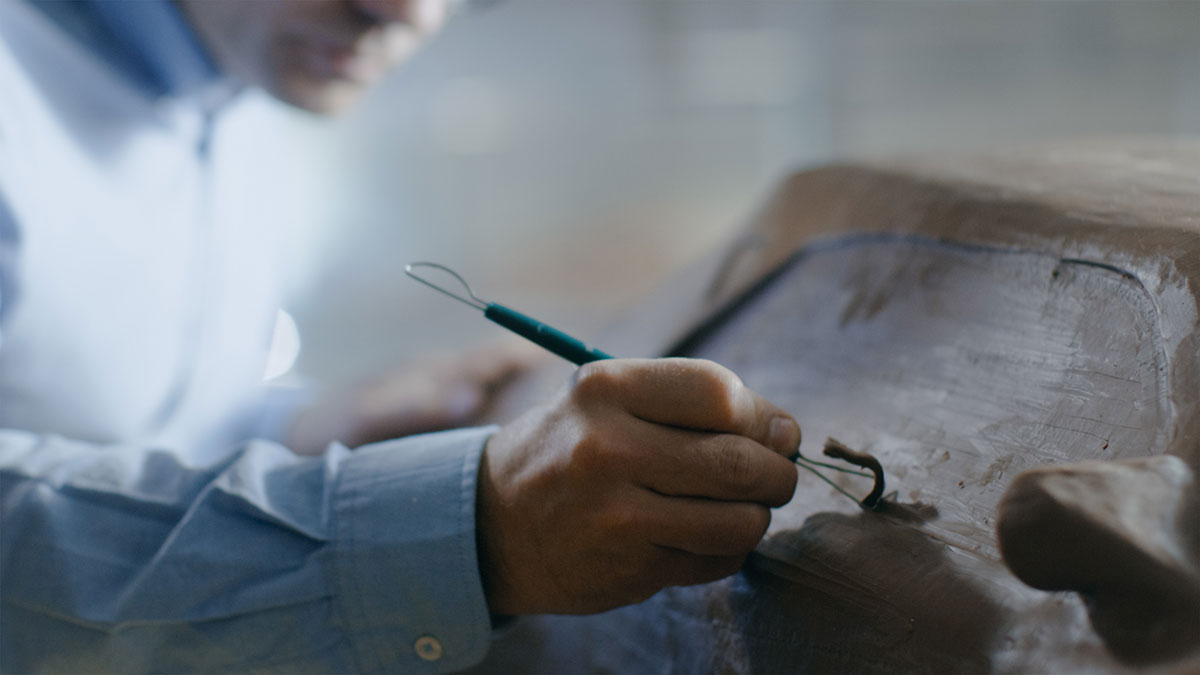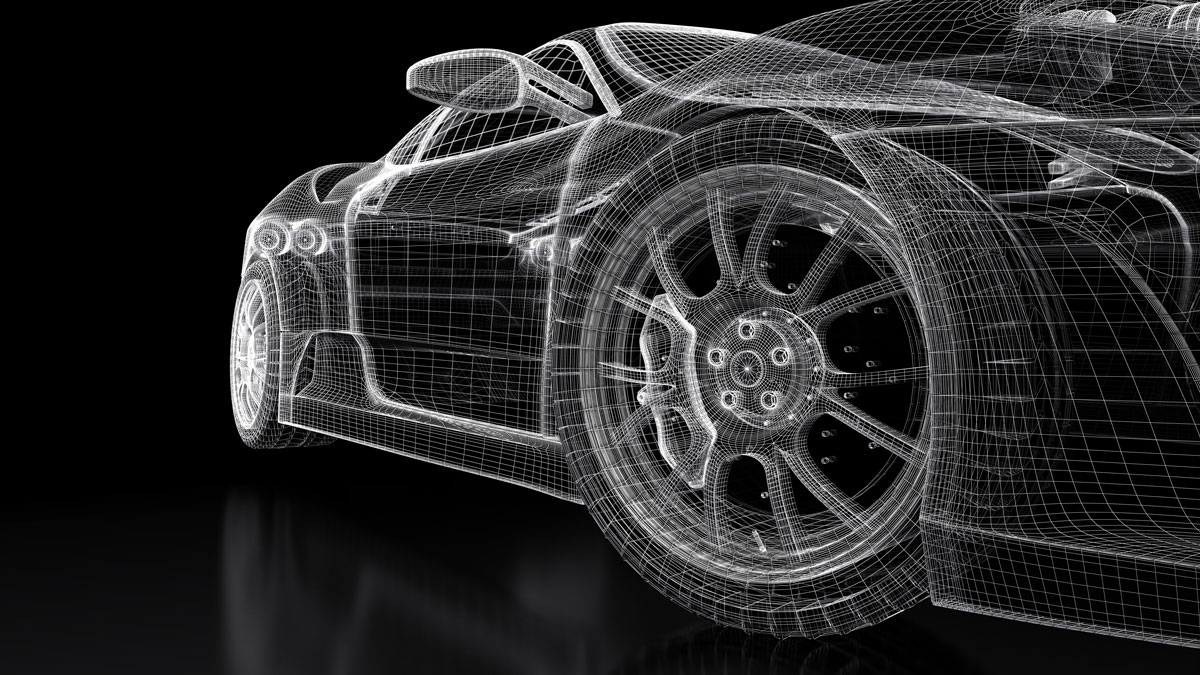Hyundai Motors has used VR technology to digitize its commercial-vehicle design, and Ford designers working from home have collaborated on new vehicles in a virtual design studio as clay modeling was impossible. In this article, we explore how replacing clay modeling with VR can speed up car design. Let’s dive in.

©Gorodenkoff / stock.adobe.com
Clay modeling remains ‘ up until now
Clay modeling ‘ the art of fleshing out car designs in clay before production ‘ has been in use since the 1950s, and brand names like Ford, Audi and Mercedes, still use clay sculpting to visualize their designs at a considerable cost.
The reason clay has remained relevant, despite cutting edge developments in CAD, 3D printing and virtual reality, is that it allows for collaboration and shifts the mind’s perspective from small details to the bigger picture.
However, recent VR and VR modeling developments provide the same benefits as clay sculpting. Most notably: Accelerated production.
The car design process with clay modeling
Today’s car development process is highly fragmented, with inefficiencies created by analog elements and numerous iterations. In the words of Hyundai Motors’ SangYup Lee, when a new car model debuts into the market, it is in a way already old since it has been in production for two years.
The typical design process looks something like this:
- Key sketch
- CAD
- Data Scan
- 3D Rendering
- Design Approval
- 2D Rendering
- Clay Model
- CAD Model
- Resurfacing CAD
This process requires the collaboration of the designer, digital modeler, technician, 3D visualization expert, design manager and clay modeler, with many iterations moving back and forth between teams before the final product is released. VR design software allows the design process to start from a 3D sketch, which has numerous benefits. Here are five reasons why VR modeling is better than clay modeling.
VR avoids the space and cost requirements of clay modeling
The main benefit to clay modeling is that you can walk around the life-sized design and look at it from many different perspectives. Clay models are expensive to create, require highly computerized milling machines and a working/testing studio. Automotive companies have to include these costs in their production budget.
Additionally, time gets wasted while the design is frozen, awaiting the model to arrive. Smaller companies and satellite studios do not always have enough space and finances to cover these costs and often choose to go from CAD to VR to release. When satellite studios need to design clay models, they rely on design centers to create and ship the clay models, incurring a huge cost. VR modeling makes the review process highly efficient by removing the need for clay prototypes and reducing the number of prototypes needed. SEAT has used VR modeling to reduce the number of prototypes in their development process by 50 percent.
VR allows a better design quality through more and quicker iterations
A car design goes through several iterations before being presented to the manager for approval, and sometimes, a model makes it to the final stage only for fundamental mistakes to appear. One of the critical advantages VR provides over clay modeling is that a designer can add innovation to the design during the early stages, saving time spent getting back to the drawing board to add features or make critical design corrections.
With VR software a designer no longer needs to switch between programs. Designers can walk around the early model, inspect the design up close or from a distance, change the color of the body, interact with the design and begin working on predefined animations. With clay modeling, core iterations cannot be made by the milling machines or by the sculptors, and the design has to be rescanned into CAD to make these changes.
Clay modeling makes remote collaboration impossible
All members must be present in a physical studio to create a smooth workflow. With virtual reality, you can construct a virtual workspace and allow each team member involved in the design process to evaluate and contribute.
A virtual studio allows for collaboration between individuals worldwide and can be time-saving for large companies whose production involves multiple satellite studios. A unified virtual environment every member has access to, aids in effective decision making. Misunderstandings and conflicts in the design can be resolved early in the development process.
A VR model is more exciting to present to clients
Before a car design is approved, it needs to be approved by top management, investors and clients. In this regard, VR is an excellent tool for presenting ideas to shareholders. Clients and investors who are not part of the automotive industry find it difficult to imagine how a 2D rendering will transform once adopted into a life-sized car. A VR model helps shareholders experience the future car before investing in the venture.
Putting on a VR headset and being immersed in the virtual studio is a great experience for clients. Another valuable quality of VR is that clients can look at the car, not only in the studio but also on the street, in daylight or during the night. And most importantly, outside, with other vehicles.
Produces a more interactive prototype than clay modeling
In automotive, function is as important as form and beauty. Clients need to experience a car’s performance before investing, and VR helps to gain client confidence by producing a highly interactive prototype.
Clay modeling persist because you can walk around a life-sized model and look at the shape, form, and curves from different angles. VR models allow for a similar experience with even more benefits. Although a VR model is not a photorealistic presentation, you can still analyze the form and shape of the car, and walking around the car gives a great sense of scale. VR design software provides custom shaders that assist in analyzing the volume and curves of a design.
With a VR model, clients can feel the interior space, fully immersing themselves in the design. This is crucial in car design, where a difference of a few millimeters can alter the appearance of a component. The production team gets a better idea of how the driver and passengers will experience their design, which is much more difficult with a clay model. Such experiences help to sell a design concept without incurring expensive costs.
In addition to offering an interactive and individualized experience for stakeholders, VR modeling allows the client to test out desired changes immediately without needing physical reconstruction, as it would be necessary with clay models.
If a stakeholder wants to test a different color scheme, VR provides the software to make changes on the spot and records the desired changes in the VR studio. Interactivity and spontaneity make for satisfied clients, and the development team also has a better record of what the client wants from the car.
VR modeling is the future of automotive design
Although VR technology cannot produce a real world view, it still offers a realistic design just like clay modeling does. A VR design software, like flyingshapes, offers many benefits over clay sculpting. Saving time and money incurred during the creative process are just a few of those benefits. VR modeling also allows stakeholders outside the automotive industry to participate in the design process, making for satisfied clients.


